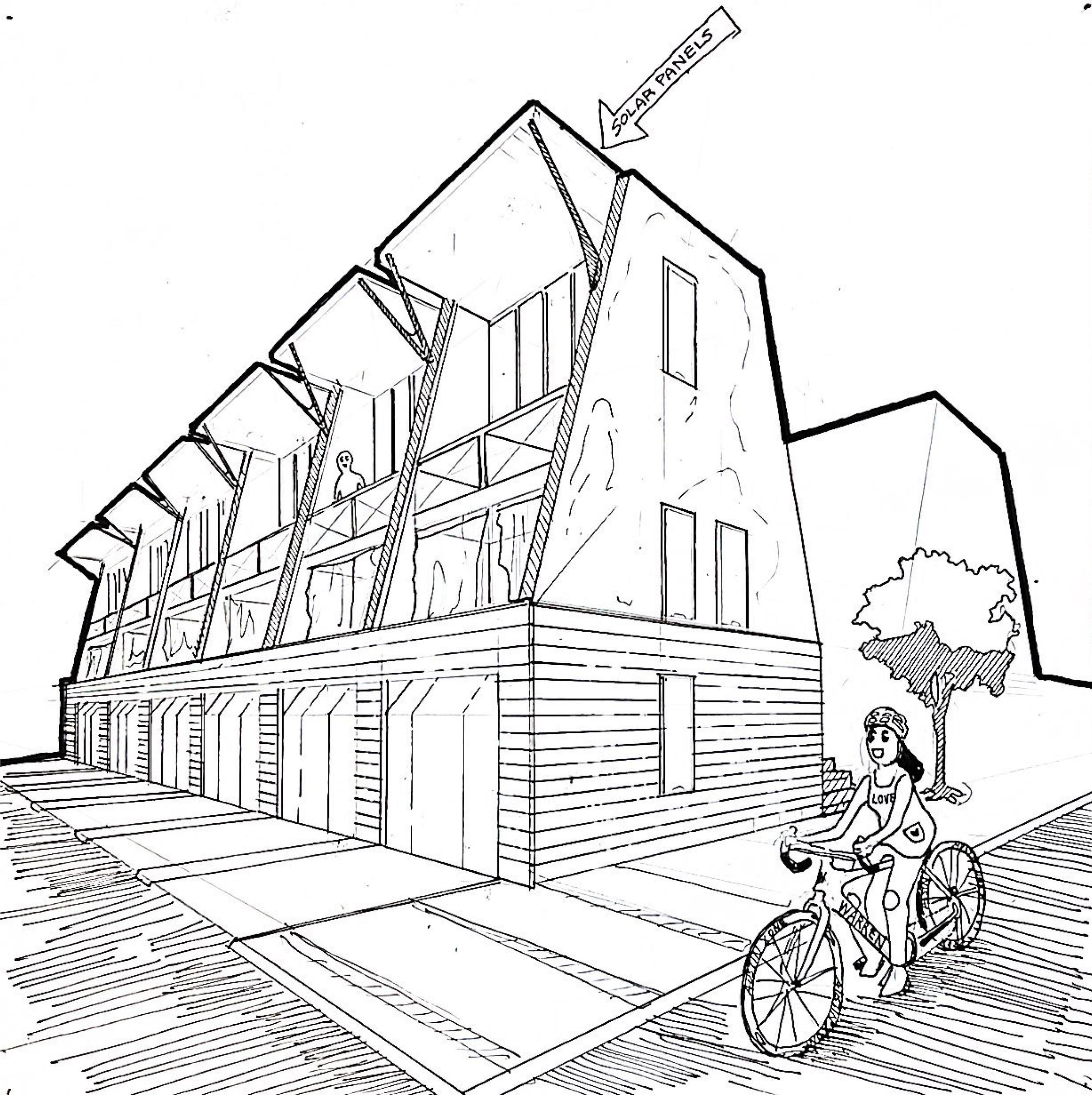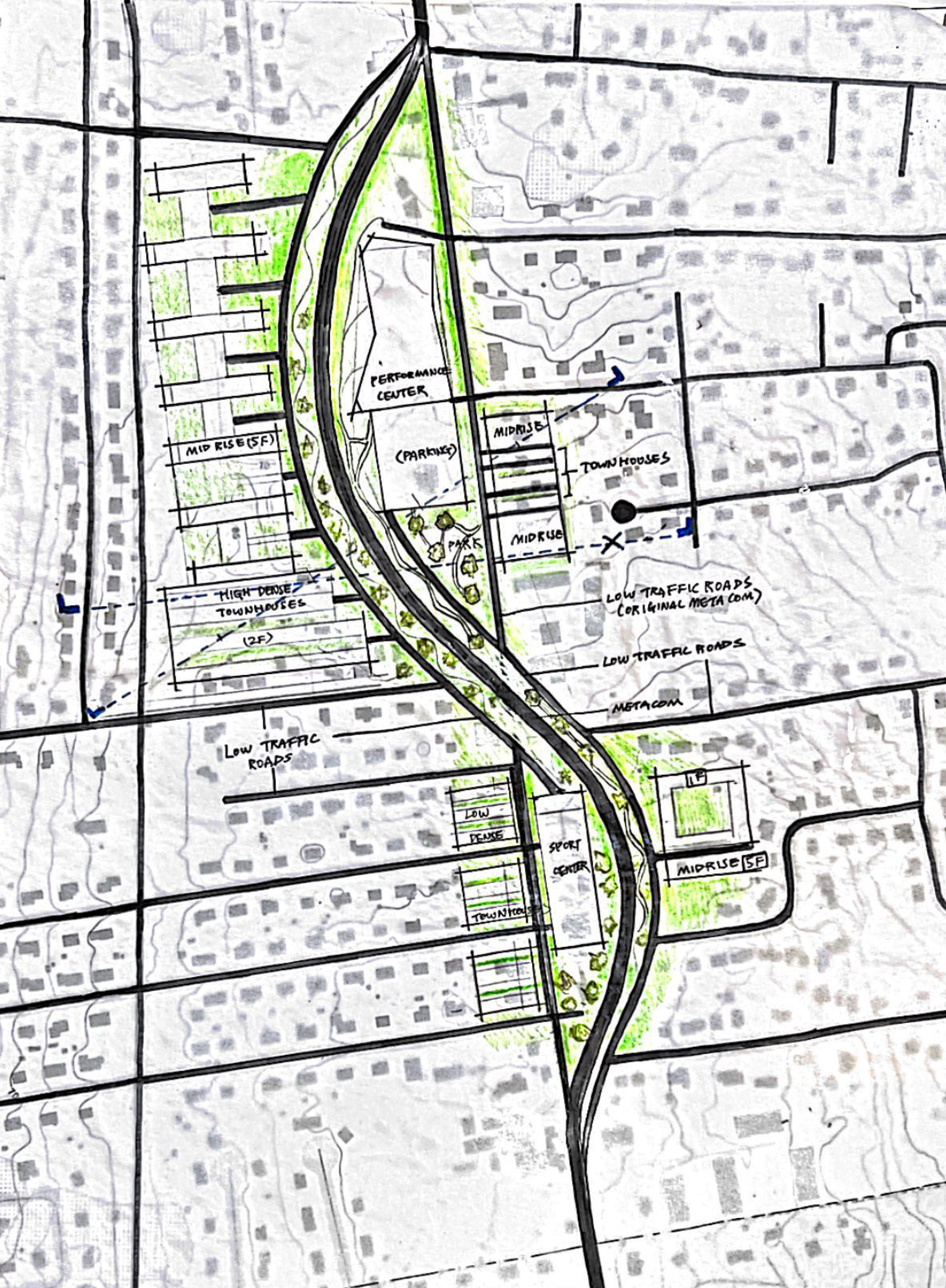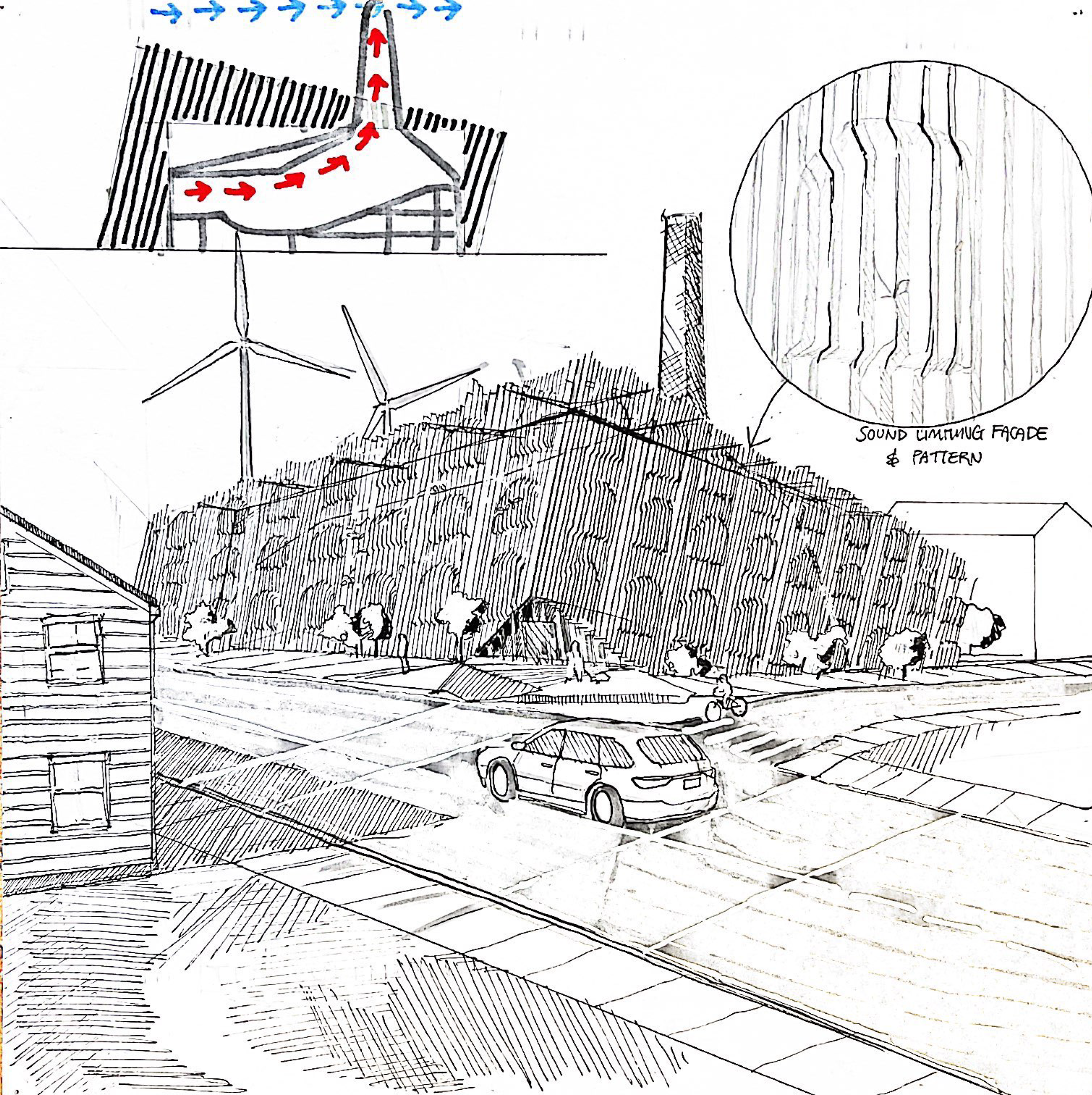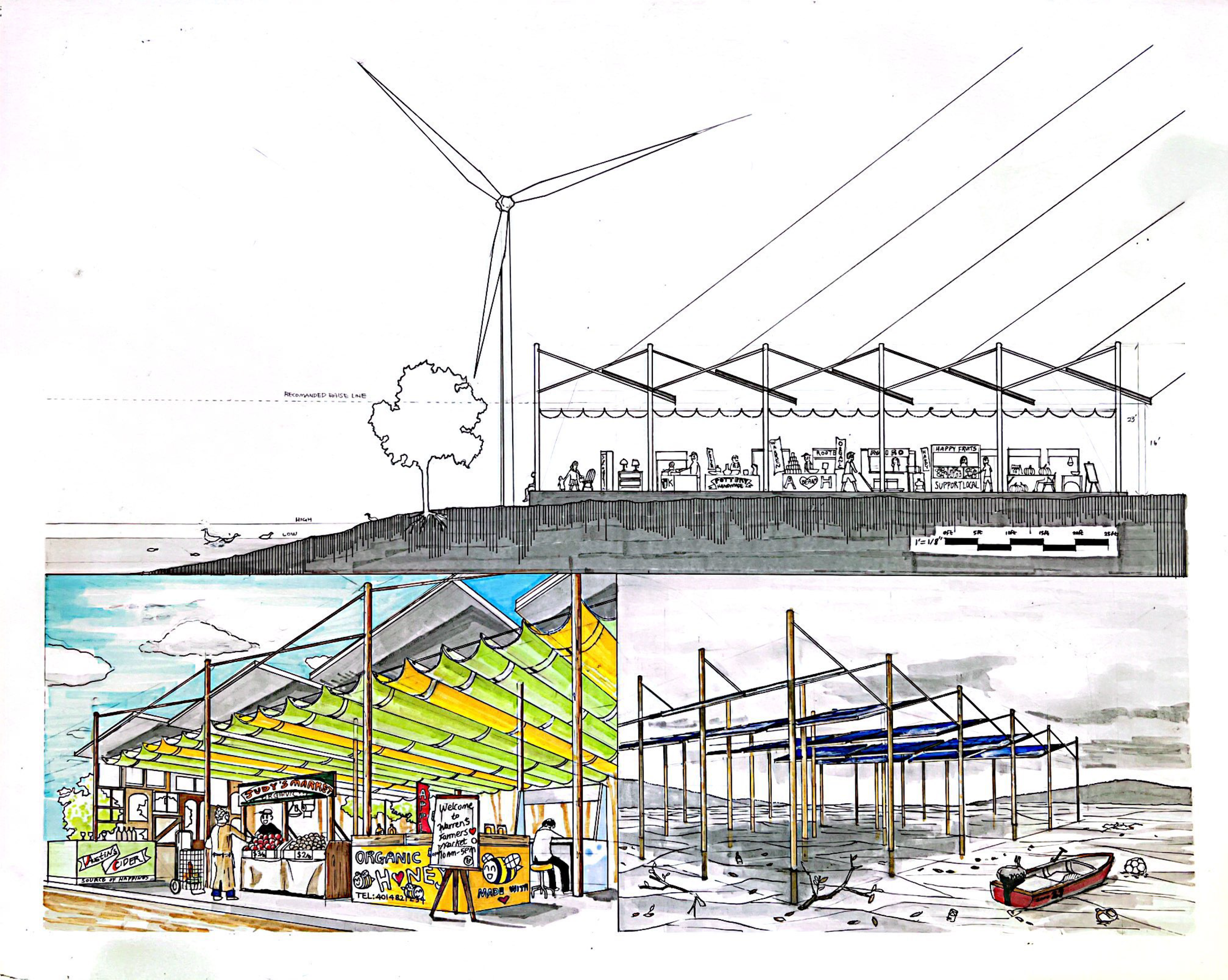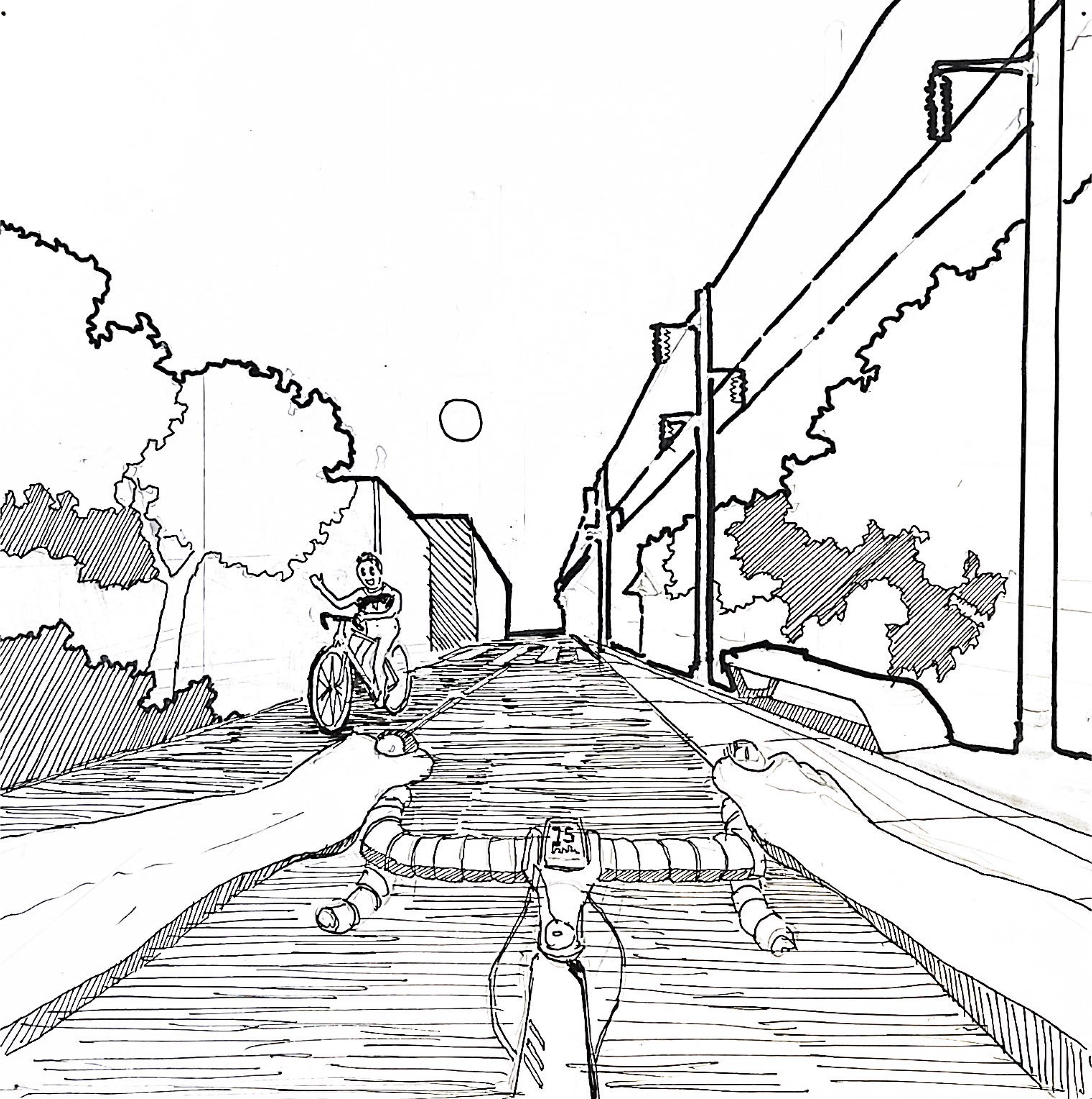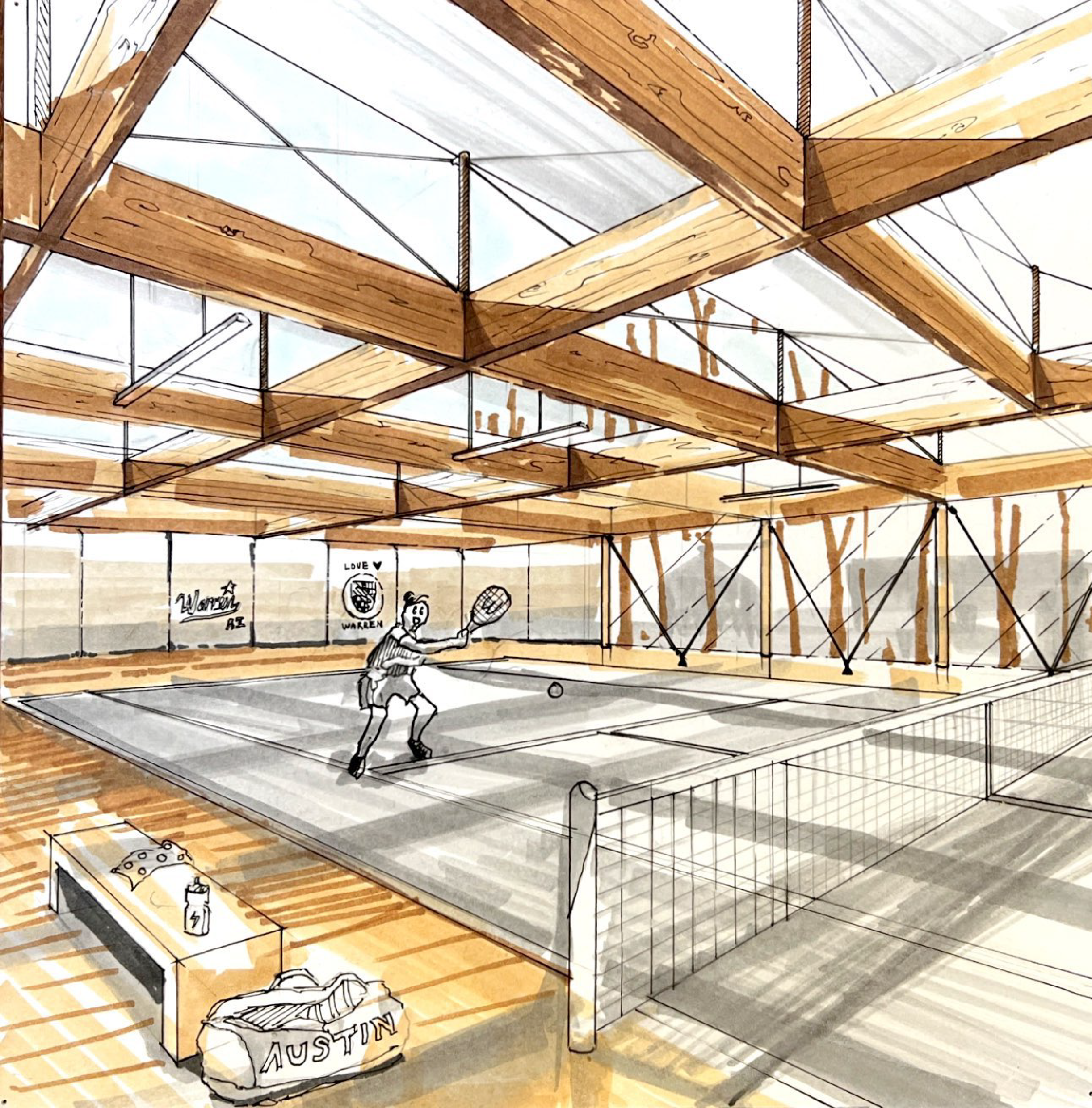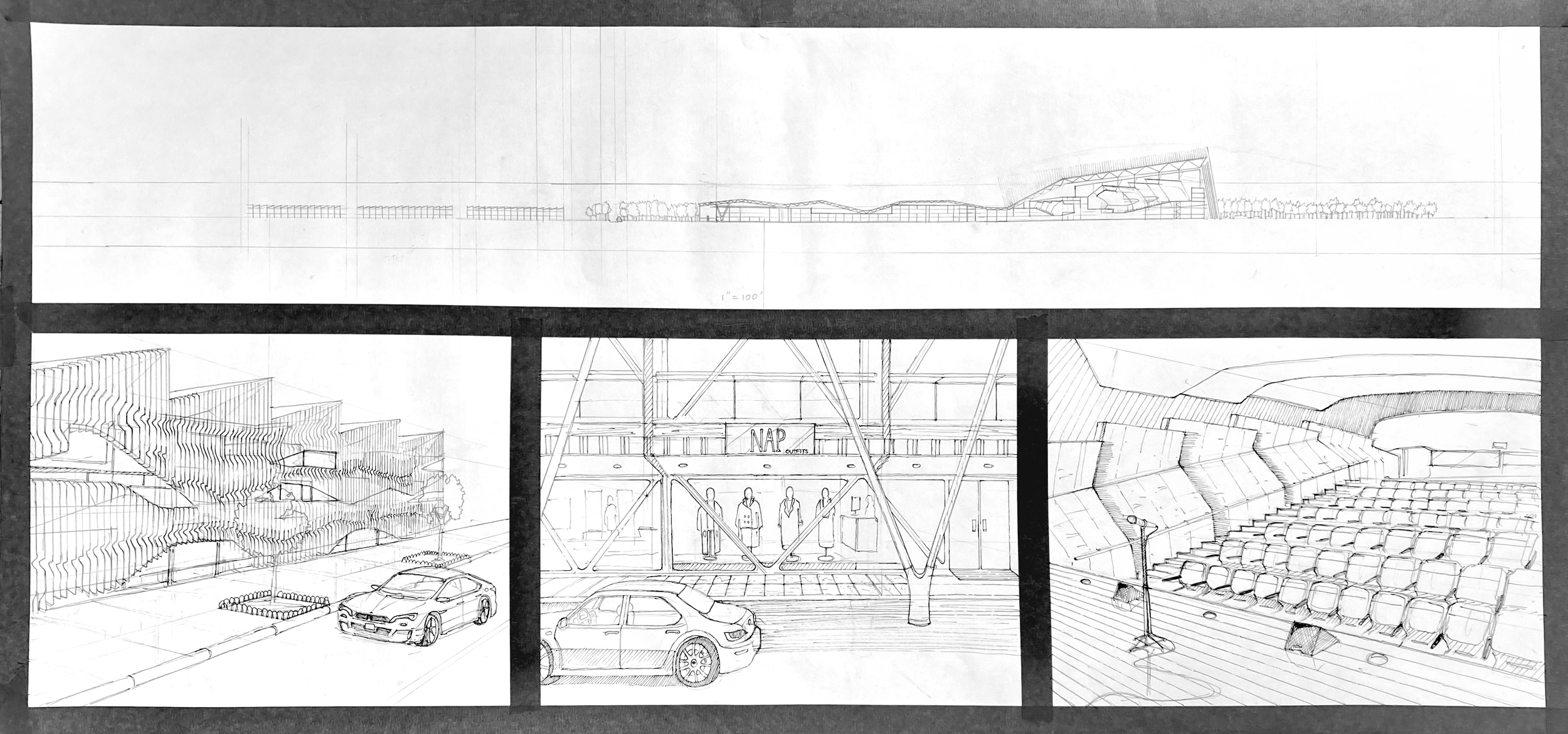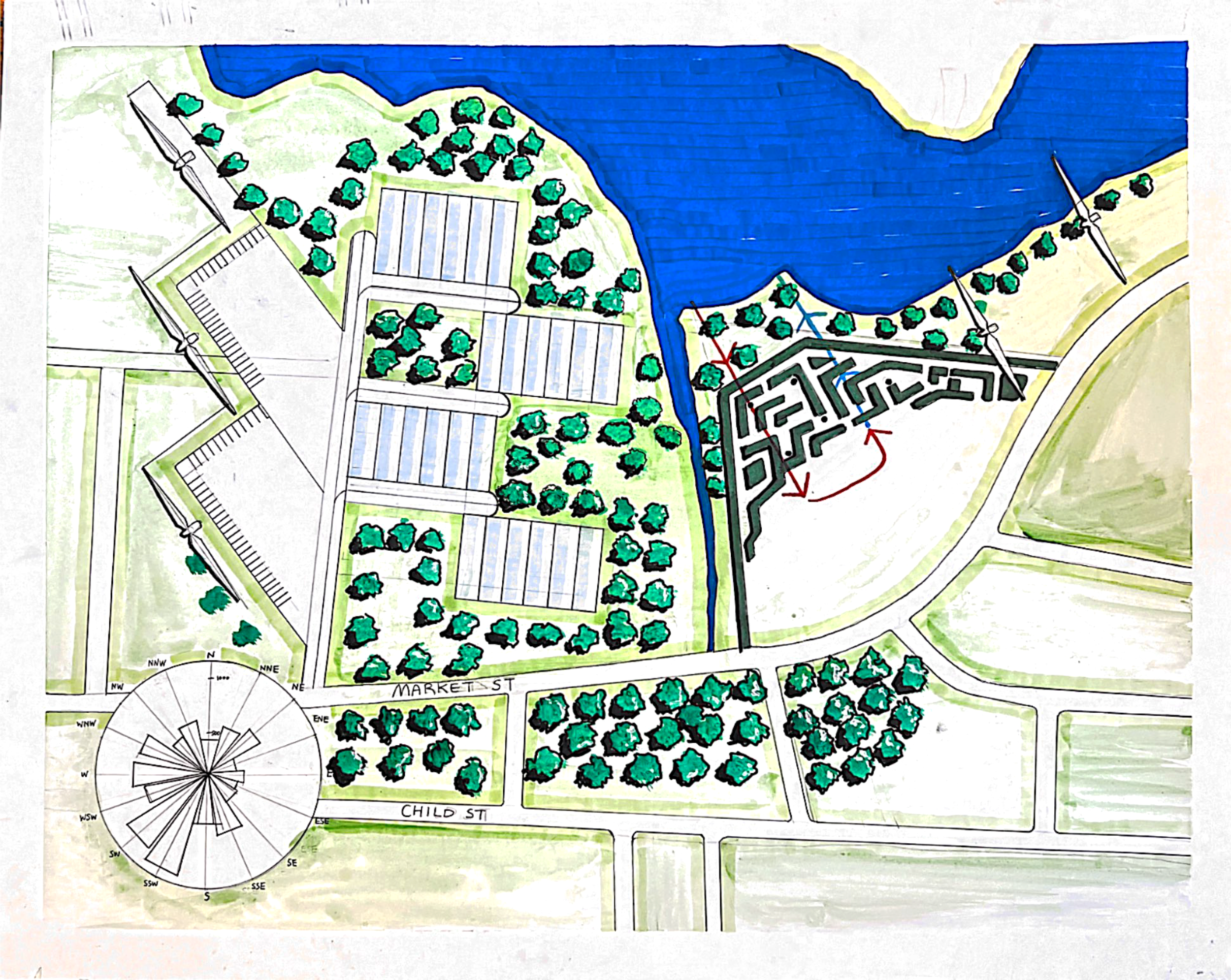From Narragansett Bay to Taiwan: One Student’s Journey to City Planning
By Charlotte Van Voorhis
It had been several months since Tzu-Chun Hsu (Austin) had completed the Envision Resilience Narragansett Bay Challenge, when one day to his surprise, he opened an email from his professor Laura Briggs to find that he had won an award. In fact, all of the 2022 Envision Resilience Narragansett Bay Challenge teams had been selected as recipients of the Rhode Island chapter of the American Planning Association (APA)’s annual Student Award. The APA recognized the innovative student designs that inspired significant community engagement in local Rhode Island communities during the spring 2022 semester.
“It was very rewarding,” Austin said in a recent interview. Born and raised in Taiwan, Austin moved to Providence at the age of eighteen to attend the Rhode Island School of Design (RISD).
“I actually didn’t want to [study] architecture at first,” he reflected. But after his sophomore year, Austin began focusing on the livability inside of buildings instead of just the artistry of their exterior. “I had this realization that I was designing architecture from a God’s eye view–like in Minecraft… but in reality, architecture is more about experiencing a space on the ground as opposed to flying all around it.”
Austin found his own ways to communicate that experience in the 2022 Envision Resilience Narragansett Bay Challenge. A member of the twelve-person RISD Architecture team, one of fourteen participating teams in the Challenge, Austin’s team looked at the town of Warren, Rhode Island. Warren is currently working through large-scale relocation concept frameworks of low-lying Market Street up to commercial Metacom Street.
“It was the largest scale project I’ve ever done,” said Austin reflecting on his work that covered two zones of Warren, which created nearly the work of two studios in one for their final presentation.
“At first, we panicked because we saw other schools’ projects and they had detailed maps and renderings and all we had were sketches,” Austin remembered. “But I will say one of our strengths as art students is our ability to hand draw our projects.”
His team’s final proposal prominently featured a comic strip detailing a day in the life of someone living in the design.
“For me, drawing the comic strip allowed me to present the design in my own way,” he said. “But most importantly, to present how it could be lived in by real people.”
Juror April De Simone spoke to the efficacy of his work during the spring jury review.
“I love the use of the comic strip to zone it into how I’m personally navigating the space as an identity, as a person,” she said. “It really humanizes technological jargon.”
Austin's comic strip displayed in his team's final presentation.Austin plans to bring this grounded architectural style into his future career.
“There aren’t many social programs in Taiwan,” he explained. “[Affordable housing] is kind of like a politician’s empty promise.”
Austin wants to change that, a goal he never would have set for himself without the Envision Resilience Challenge.
“This project shaped a big part of my future. I wasn’t thinking about urban planning before–but I realized that Taiwan probably doesn’t need another architect; but maybe it needs a planner.”
According to Austin, a good city planner has an eye for architecture but also the power of persuasion, which he got a taste for during his final presentation.
“It was the first time that I’ve ever had to convince locals that our designs were good,” he said. “I think that skill is almost as important as good architecture itself.”
Austin got to observe a persuasive city planner first hand when he met Bob Rulli in Warren. Bob, the former director of the Office of Planning and Community Development for the Town of Warren acted as a deeply impactful advisor to Austin’s team. Following his last year at RISD, Austin now plans to attend graduate school and then return to Taiwan as a city planner. Austin noted that he aspires to “one day be a Bob Rulli of Taiwan.”
Austin and some Envision Resilience students presented by Bob Rulli with the Rhode Island APA Student Award. (Left to right) Austin Hsu & Tae Ha (RISD), Bob Rulli, Nora Masler (Northeastern), Brooke Pariseau & Julia Kaplin (URI) and Tessa Hocquet (Northeastern).“I was very interested in Bob’s focus on the numbers,” Austin remembered. “It’s not always something we think about as students; we don’t usually think about cars on the road, for example, or where the funding is coming from.”
On Bob’s recommendation, Austin focused on incorporating these factors in his team’s final design.
“My teammate Hong and I wanted to create a system that basically feeds itself financially by incorporating energy from solar panels and wind turbines. This was a very different approach than just designing at random.”
In his own work for his role as a Warren city planner, Bob found the volume and quality of the students’ work incredibly helpful. At the 2022 Designs for Living with Rising Seas Exhibition, a month-long exhibit at WaterFire Arts Center in Providence he said, “it’s the equivalent to us having to hire four different consulting firms.”
Bob also pointed out that the students’ creativity provides hopeful takeaways, “so it’s not just all doom and gloom.” In fact, Bob liked the students’ work so much that he incorporated some of their ideas into Warren’s enormous Market to Metacom relocation project.
When I asked Austin what piqued his interest in the Envision Resilience design studio at RISD in the first place, he cited the amazing professors involved. Professor Laura Briggs introduced the students to the innovative concrete-substitute, hempcrete, and promised hands-on experience with the material. Professor Anne Tate’s emphasis on urban planning and the built environment also enticed Austin. His time in the course felt like important professional preparation.
“I think this studio was very well constructed,” Austin remarked, “working with the Envision Resilience Challenge gave us a sense of real life instead of just a make-believe design prompt.”
For all of the RISD students, drawing became a central part of their work. Austin reported that Professor Tate’s “old school” pedagogy emphasizes that the students work with pencils instead of computers on their renderings.
“Drawing makes you slow down,” Austin said. “It makes you think. When I’m designing a computer model, I already know what it will look like. But the time it takes to hand draw something allows you to ask ‘Is there a better way to do this?’”
The project also offered a chance to practice the skill of knowing when to put pencils down. Austin felt that “both professors did a good job of showing us how to design something and then how to stop designing it.” Austin found this skill invaluable, because “design is never complete; you can always refine.”
One of Austin's hand-drawn designs depicting Warren's Market Street area.And indeed, time management proved imperative for the RISD team in particular. Since RISD operates on a trimester system, rather than a semester system, the students had only six weeks, instead of the usual twelve, in which to create their designs.
At the final presentation, Austin at last got a taste for how community members and professionals perceived his work. Each team from RISD and all of the participating schools presented their designs to a panel of jurors, who run the gamut from local professionals to international professors. Receiving evaluation from these outside jurors was a brand new experience for many students like Austin who had only ever received feedback from professors within their schools’ ivory tower.
“Normally after a project, we just hear from our RISD professors talking about what worked or didn’t. Having that local feedback was huge.”
After the teams received their feedback, they went back to their everyday college lives. However, their Envision Resilience journey did not end there. Bob himself presented Austin and his cohort with their APA Student Award on a chilly January night in Cranston. The lucky few on the Envision Resilience team who attended applauded Austin and the other students who have just begun of what will undoubtedly turn into long and fruitful careers.
About the author: Charlotte Van Voorhis is the Communications and Social Media Coordinator for ReMain Nantucket.


